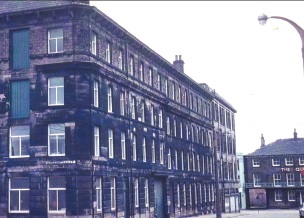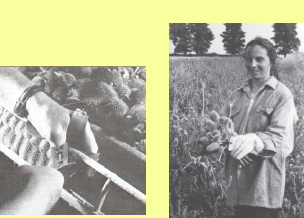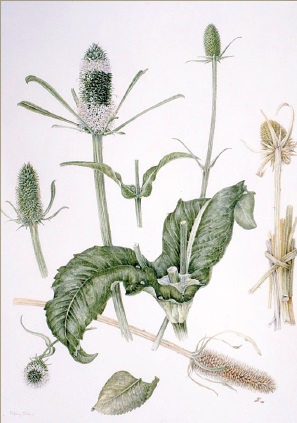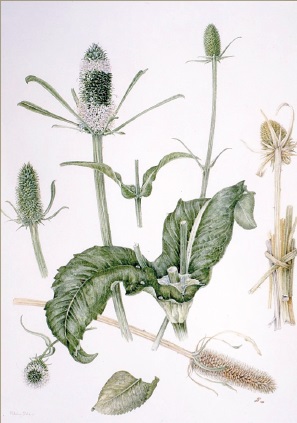Teazles and Teazle Men
The teazle trade in the West Riding of Yorkshire since the eighteenth century
Robert A. McMillan




Robert McMillan was born in Paisley in 1941. He moved with his family to Leigh in Lancashire in 1947. After a degree in history at the University of Leeds in 1963, he worked in schools and in museums.
“Teazles and Teazle Men” is an outcome of a survey in the 1970s of a number of small traditional trades that still supplied the wool textile industries in the West Riding of Yorkshire with specialised goods and services. These included the manufacturing of textile chalks, reed and heald making, skep making and the production of specialised leathers for textile machines.
One aim of the book has been to rescue the teazle trade from its sometimes quaint, folksy image and to show in detail the reality of a business influenced increasingly in this country by the needs of the Yorkshire market since the eighteenth century and latterly controlled by a small group of teazle merchants in Leeds and Huddersfield.
Content can be read and downloaded (all rights reserved ) for free by clicking on the links below…..
Part 1 The Background:
Chapter 1 – The fullers’ teazle and its uses
Chapter 2 – The trade in teazles
Part 2 Supply & Demand in the West Riding of Yorkshire
Chapter 3 – The need for teazles
Part 3 The Commerce
Chapter 5 – Growers and dealers to the 1860’s
Chapter 6 – Leeds teazle dealers, agents and merchants to the 1860’s
Chapter 7 – The Leeds teazle merchants from the 1880’s to 1914
Chapter 8 – The Huddersfield trade to 1914
Chapter 9 – The Yorkshire teazle merchants after 1914
Part 4 Practices and Methods
Chapter 11 – Spindle or cut teazles
I am pleased to receive feedback and comments and to reply when required. Please email me at: robert@www.teazlesandteazlemen.co.uk
Website by: Pennine IT Services
Teazles and Teazle Men
The teazle trade in the West Riding of Yorkshire since the eighteenth century
Robert A. McMillan

Robert McMillan was born in Paisley in 1941. He moved with his family to Leigh in Lancashire in 1947. After a degree in history at the University of Leeds in 1963, he worked in schools and in museums.

“Teazles and Teazle Men” is an outcome of a survey in the 1970s of a number of small traditional trades that still supplied the wool textile industries in the West Riding of Yorkshire with specialised goods and services. These included the manufacturing of textile chalks, reed and heald making, skep making and the production of specialised leathers for textile machines.
One aim of the book has been to rescue the teazle trade from its sometimes quaint, folksy image and to show in detail the reality of a business influenced increasingly in this country by the needs of the Yorkshire market since the eighteenth century and latterly controlled by a small group of teazle merchants in Leeds and Huddersfield.
Content can be read and downloaded (all rights reserved ) for free by clicking on the links below…..
Part 1 The Background:
Chapter 1 – The fullers’ teazle and its uses
Chapter 2 – The trade in teazles
Part 2 Supply & Demand in the West Riding of Yorkshire
Part 3 The Commerce
Chapter 5 – Growers and dealers to the 1860’s
Chapter 6 – Leeds teazle dealers, agents and merchants to the 1860’s
Chapter 7 – The Leeds teazle merchants from the 1880’s to 1914
Chapter 8 – The Huddersfield trade to 1914
Chapter 9 – The Yorkshire teazle merchants after 1914
Part 4 Practices and Methods
Chapter 11 – Spindle or cut teazles
I am pleased to receive feedback and comments and to reply when required. Please email me at: robert@www.teazlesandteazlemen.co.uk
Website by: Pennine IT Services